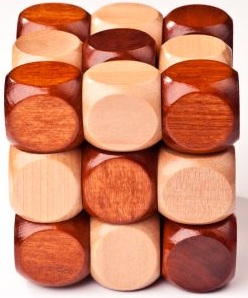Amino Acids

In simple terms, amino acids are the building blocks of protein. ("Amino" means that they contain nitrogen.) There are about 20 common ones, and nine of them are considered “essential”because the body cannot make them, and therefore, they must be supplied by the food we eat.
Is your protein complete?
Foods that contain all of the essential amino acids are called “complete proteins.” These complete protein foods are generally animal foods. Plant foods do not, as a rule, have complete proteins, but by eating combinations of plant foods, called “complementary proteins, ” you can obtain a complete protein.
For example, when you eat red beans with rice, such as is often found in Mexican cuisine, you are obtaining a complete protein. The beans and rice complement each other, in that each has some of the essential building blocks of protein and when eaten together, they provide all of them. It is generally believed by nutritionists that it is not necessary to eat these complementary proteins at the same meal.
Click here for more information about complementary proteins.
Non-essential - You don't need to find these in food.
The following are amino acids that your body can produce from nitrogen, carbohydrates and fat.
Alanine, Arginine, Asparagine, Aspartic Acid, Cysteine, Glutamic Acid, Glutamine, Glycine, Proline, Serine and Tyrosine.
Essential - You do need to find these in food.
Here is a list of the nine essential amino acids. These are the ones that your body cannot make on its own.
Histidine, Isoleucine, Leucine, Lysine, Methionine, Phenylalanine, Threonine, Tryptophan and Valine
If your diet does not contain enough of the essential amino acids, you may suffer the effects of protein deficiency.
What is a serving of protein?
If you don't have a meat scale, the usual guideline for visualizing meat servings is that the portion should be the size of a standard deck of playing cards. (Just imagine how many actual servings are represented by that large prime rib served at your favorite restaurant!)
For meatless protein sources, a serving, which is 1 large egg, ½ cup cooked beans or rice, or 2 Tablespoons of seeds, nuts or peanut butter, is equivalent to only about 1/3 of the protein in a serving of meat. Tofu can also be included in this group with a serving size of about 4oz.
In addition, most healthy eating experts recommend that, whenever possible, choose a leaner or low-fat version of the significant protein sources.
Why do I need protein?
Protein has several functions in the body. The one that most of us know about is that protein is the building material for our skin, bones, muscles and other tissues in the body. Whenever there is any damage to any of our tissues, either due to normal wear and tear, or to injury, protein is necessary to rebuild that tissue. Protein is also necessary to build brand new tissue, which makes it very important to children and pregnant women.
In addition, protein is a major component of hormones, enzymes and antibodies. These are chemicals that play a major role in many processes in the body that, among other things, digest your food, fight disease and allow you to enjoy a healthy sex life.
Proteins also function as regulators of fluid balance and acid-base balance, which help keep you from swelling up, drying up, and/or becoming toxic, any of which could be life-threatening. Protein is also involved in the clotting of blood, which keeps all your blood from seeping out when you cut yourself.
Proteins also act as transporters in the body, carrying important nutrients. These nutrients can get on the protein “bus” and travel to all the places in the body where they are needed. For example, hemoglobin, a protein in the blood, carries the oxygen from your lungs to your cells.
Finally, protein can be used by your body for energy. Needless to say, this is not the best use of protein, since it has so many uniquely important functions, as listed above, but absent another source, your body will convert protein to energy.

